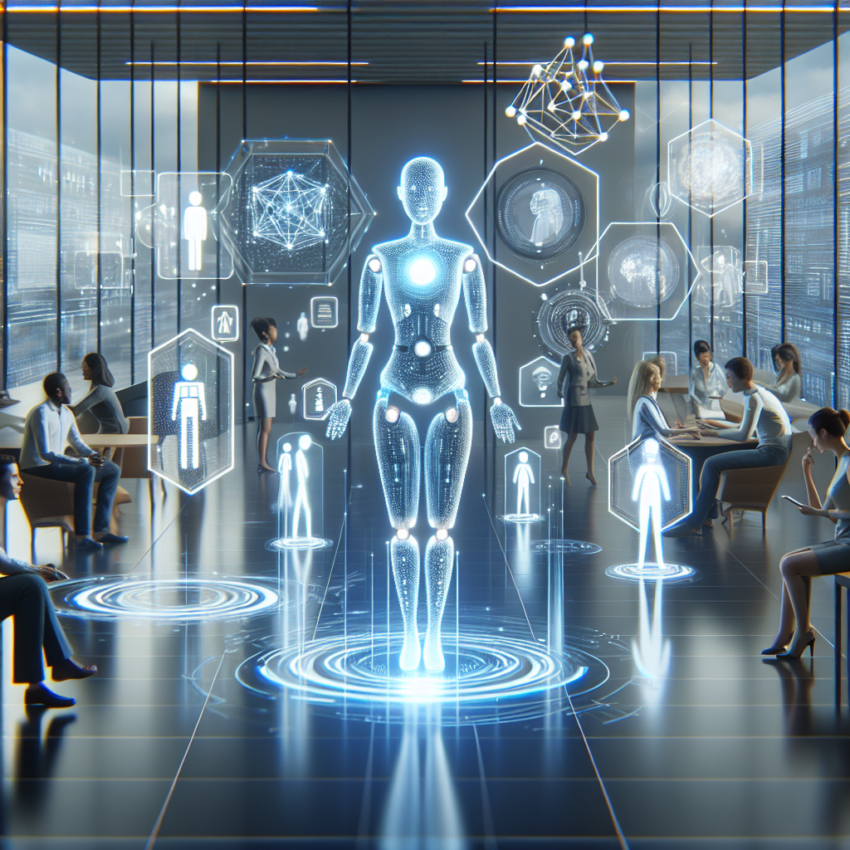The Future of AI-Powered Virtual Assistants in Customer Service
In today’s fast-paced digital landscape, businesses are always seeking innovative solutions to enhance customer experiences. One such revolutionary technology that is gaining momentum is the AI-powered virtual assistant. These intelligent systems are poised to redefine customer service, offering support and interaction that is not only efficient but also effective. In this article, we will explore the future of AI-powered virtual assistants in customer service, examining their impact, benefits, challenges, and the evolving relationship between humans and machines.
What Are AI-Powered Virtual Assistants?
AI-powered virtual assistants are software agents designed to perform tasks and assist users by using natural language processing (NLP), machine learning (ML), and other AI technologies. They can engage with users through text or voice, providing responses, answering queries, and carrying out specific tasks with minimal human intervention. Common examples include chatbots, voice assistants like Amazon’s Alexa, Apple’s Siri, and Google Assistant, and automated customer service portals.
The Current State of AI-Powered Virtual Assistants
As of 2023, AI virtual assistants are increasingly integrated into customer service channels. They handle various interactions such as answering frequently asked questions, troubleshooting issues, and guiding customers through processes. According to a recent report, up to 80% of routine customer service interactions can be managed by virtual assistants, allowing human agents to focus on more complex issues.
Benefits of AI-Powered Virtual Assistants
- 24/7 Availability: Virtual assistants provide around-the-clock support, enabling customers to receive help whenever they need it, irrespective of business hours.
- Scalability: AI assistants can handle a massive volume of inquiries simultaneously, something that would overwhelm human staff.
- Consistency in Responses: They deliver consistent answers to customer queries, reducing the chances of human error and maintaining uniformity across interactions.
- Cost-Effective: By automating routine tasks, businesses can save on operational costs, reallocating resources to higher-value activities.
- Enhanced Customer Engagement: AI assistants can provide personalized recommendations and insights, improving customer engagement and satisfaction.
Emerging Trends in AI-Powered Virtual Assistants
As technology evolves, so do the capabilities of AI-powered virtual assistants. Here are some notable trends shaping their future:
1. Natural Language Processing Advancements
Enhanced NLP capabilities allow virtual assistants to understand context and sentiment better, enabling more human-like interactions. Customers can communicate using natural language, and the AI can interpret their intentions more accurately.
2. Multimodal Interactions
Future virtual assistants will enable multimodal interactions, combining voice, text, and visual inputs. This expanded interaction mode allows users to engage in diverse ways, creating a more comprehensive support experience.
3. Integration with IoT
As the Internet of Things (IoT) continues to grow, AI virtual assistants are increasingly integrating with smart devices. This allows for seamless customer support across platforms, enhancing efficiency and user experience.
4. AI Ethics and Transparency
With the rise of AI comes the responsibility of ethical usage. Companies are focusing on transparency regarding how AI operates to build trust with customers. Future developments will likely prioritize ethical considerations in AI deployments.
5. Continuous Learning and Improvement
AI assistants will increasingly leverage machine learning to continuously adapt and improve based on past interactions. This enables them to provide increasingly relevant and accurate responses.
Challenges Ahead
Despite the advantages, the integration of AI-powered virtual assistants into customer service is not without challenges:
1. Understanding Complex Queries
While AI assistants excel at addressing routine queries, they can struggle with complex or nuanced questions. This may lead to customer frustration when their needs are not adequately met.
2. Dependence on Technology
Over-reliance on AI systems can result in service disruptions during technical failures or power outages, highlighting the need for a balanced approach.
3. Data Privacy Concerns
Handling sensitive customer data raises concerns about privacy and security. Companies must prioritize implementing robust security measures to protect user information.
4. Human Touch
While AI can provide timely and efficient responses, it may lack the emotional intelligence that human agents bring to customer interactions. Striking the right balance between AI and human support is crucial.
Human and AI Collaboration
The future of customer service is not solely about AI replacing human agents. Instead, a collaborative model that combines the strengths of both is emerging. Here are a few ways AI and human agents can work together:
- AI for Routine Tasks: AI can manage basic queries and tasks, allowing human agents to focus on more complex and emotionally charged issues.
- Human Oversight: Humans can monitor AI interactions to ensure quality and intervene when necessary, preserving the human touch in customer service.
- Feedback Loops: Human agents can provide feedback to improve AI systems, ensuring they adapt and respond appropriately to user needs.
Conclusion
AI-powered virtual assistants are revolutionizing customer service, presenting opportunities and challenges alike. As advancements in AI technology continue to evolve, businesses must leverage these tools to enhance customer interactions while simultaneously addressing ethical considerations and potential limitations. The future of customer service will hinge on the ability to harmonize the strengths of AI with the invaluable human touch, ultimately creating a seamless and satisfying customer experience.

